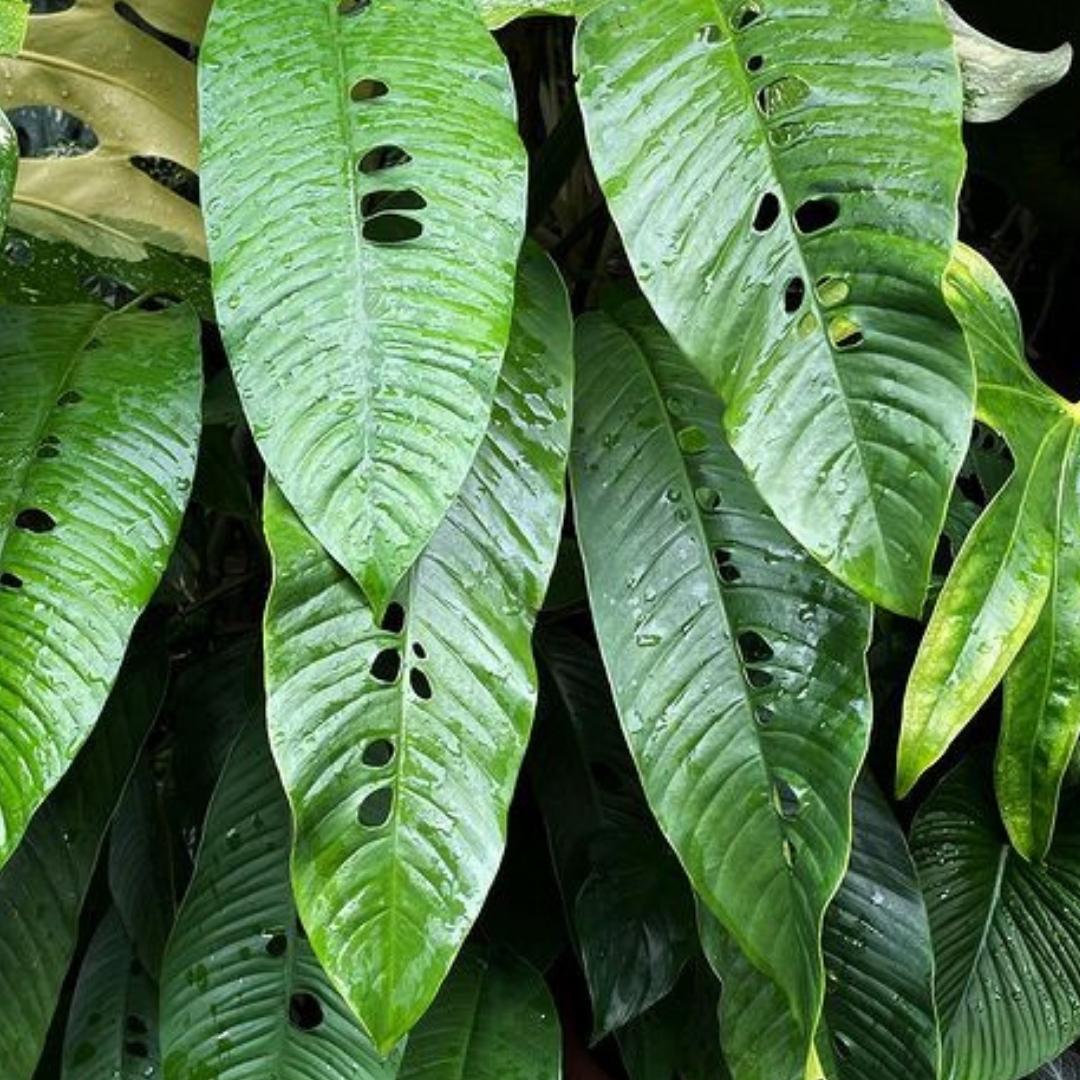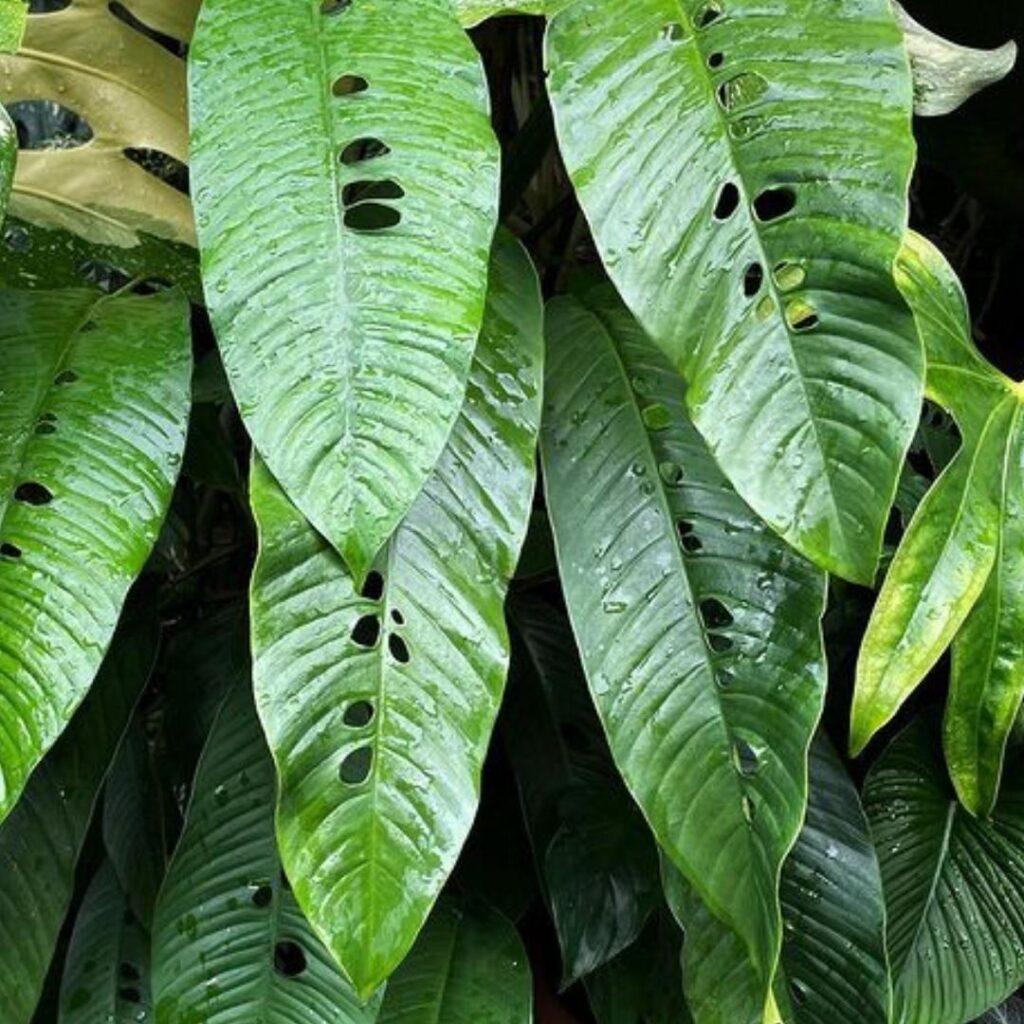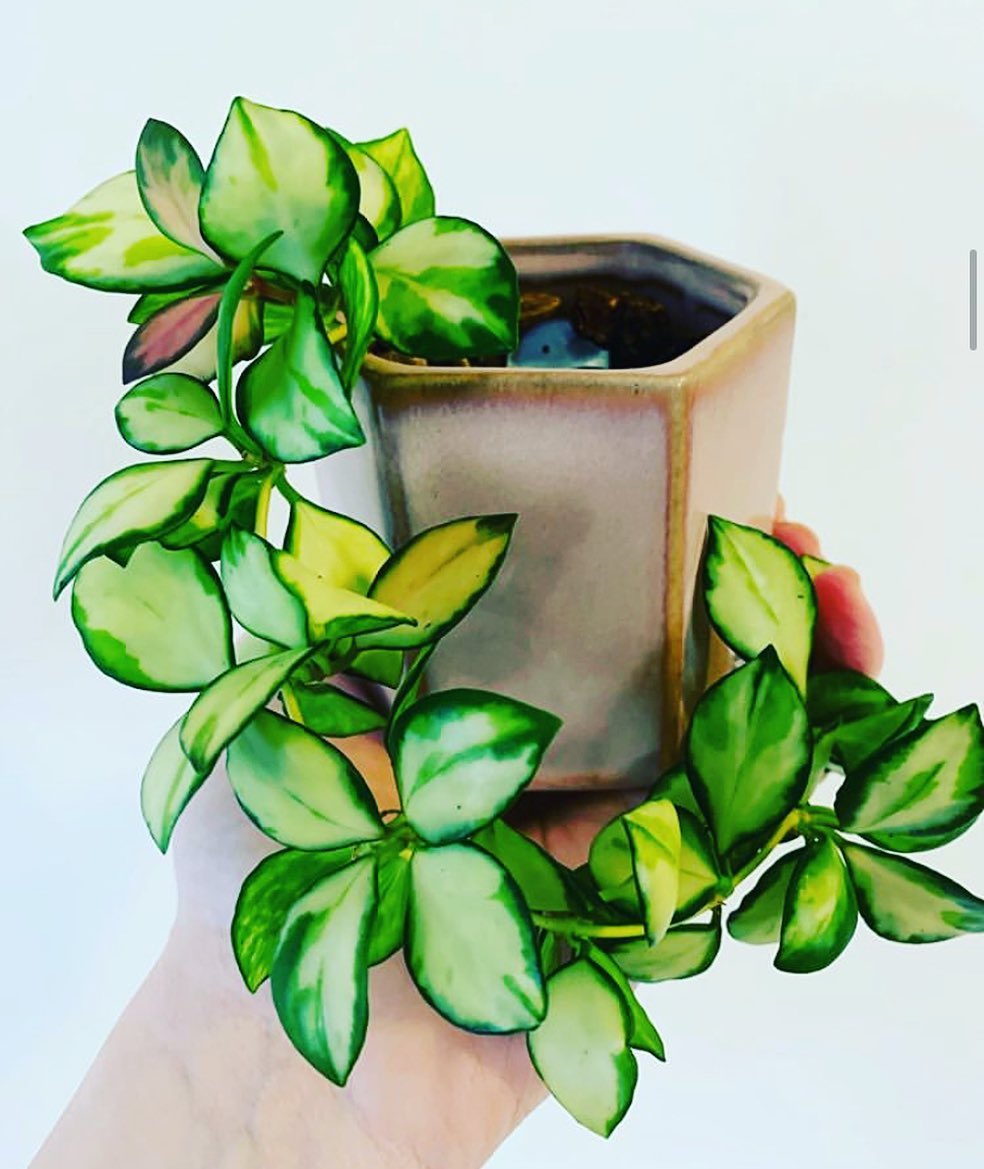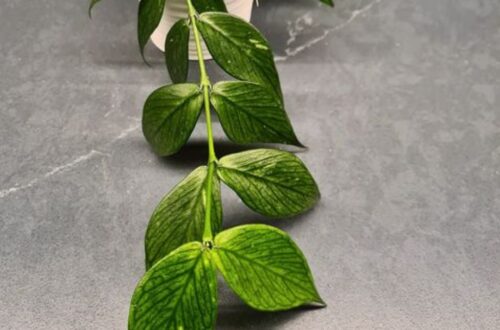
Rhaphidophora Foraminifera Care
We run down all you need to know about rhaphidophora foraminifera care, it is a fairly straight forward to care, just give it a chunky and airy soil and avoid over watering.
Rhaphidophora Foraminifera Care Summary
| Light needs: | Bright indirect sunlight. |
| Watering needs: | Check the plant every week, water it if the top 50% of soil is dry. |
| Fertilizer: | A balanced feed once every 3 or 4 weeks in the spring and summer. |
| Soil: | A well draining potting mix. |
| Humidity: | 50%-70%. |
| Temperature: | 15-30°C (59-86°F). |
| Where to buy: | Try our list of Rare Plant Shops. |
| Common issues: | Root rot from over watering. |
Introduction
Occurring naturally in Malaysia, Borneo, and Sumatra, the rhaphidophora foraminifera, is known for its large leaves and two central lines of small holes down the center.
See also: Rhaphidophora Tetrasperma Care, Rhaphidophora Hayi Care.
Rhaphidophora Foraminifera Light Needs
Plenty of indirect sunlight. They’ll be ok in medium indirect light but can get bit leggy. Avoid direct sun if you can which can burn the plant.
Tip: we recommend Etsy for buying plants. Look for the best rated seller you can, and try to buy as close to your home as possible so the plant does not travel too far.
A note about affiliate links: when you buy a plant, pots, soil, or other goods through links on this article we sometimes earn a commission. It doesn’t cost you anything, but it really helps us out if you do use them. Thanks a lot! An example of this is if you buy a plant on Etsy using this link. Read our privacy policy for more information. Thanks again.
How Often to Water
Let the top 50% of soil dry out before watering again. Check the plant every week. You don’t want to over water them, as they can get root rot easily. After watering tip out any water that is left standing in the tray or saucer un the plant as you do not want waterlogging with can leaf to root rot.
Fertilizer
Use a balanced feed once every 3 or 4 weeks in the spring and summer. If you don’t feed them they’ll still grow just fine, but feeding can make them grow much faster.
Soil
A well draining potting compost is ideal, because of the potential root rot issues. You can use a mix for any aroid, see our guide here.
Tip: you can use a monstera soil or any aroid soil for a rhaphidophora. They want a well draining mix that doesn’t allow them to get too soggy, and allows some air to the roots. See our guide here: Monstera Soil.
When To Repot
Repot it in spring if it is outgrowing its current pot.
Rhaphidophora Foraminifera Humidity
50%-70% is ideal, they are tropical plants and love to be humid. If you don’t get a humidifier, get a humidity meter (they are really cheap) and if the humidity drops, make sure you mist the plant.
Tip: Keep them humid, at least 60% in the day and they’ll be ok with a bit less at night. You can buy a humidity meter (affiliate link) to keep an eye on maximum and minimum levels.
Temperature
15-30°C (59-86°F) is the ideal range, so they’ll be fine in most homes. Try to keep them above 10°C (50°F) in the winter or at night.
Rhaphidophora Foraminifera Propagation
The rhaphidophora foraminifera can be propagated like other similar aroids, by taking node cuttings with one leaf and one node, and rooting them in soil, leca or sphagnum moss over a month or two. If you are propagating a lot at one time you can take a hole branch of the plant and cut between each section to get a lot of cuttings in one go and and then put them all on a bed of sphagnum moss to root.
Keep the cuttings warm, moist, well lit and humid, but let air circulate a bit to avoid rot. You can do this buy keeping in a sealable container but leaving the lid slightly off so air can move.
rhaphidophora foraminifera variegata
There is a variegated plant for sale on the market at the moment, fetching over 200 euros for a small plant. It is sometimes sold as a ‘rhaphidophora foraminifera mint’ due to it’s greeny hues. It is a stunning plant.
rhaphidophora foraminifera price
The standard (non-variegated) version of the plant currently sells for 80 to 120 euros for good specimen.
rhaphidophora megasperma vs foraminifera
These are similar plants but the difference is that the megasperma has smaller laves and more sporadic holes, the foraminifera has 2 lines of holes down the center of it’s leaves.
rhaphidophora foraminifera USDA Zone
Zones 9b-11
Is It Toxic To Cats?
They are toxic to cats if eaten, so contact a vet straight away. They can cause vomiting and numbness in the mouth.
Where To Buy
Try our list of Rare Plant Shops.
For more on rhaphidophoras see our rhaphidophora category with all our care guides.
Rhaphidophora Foraminifera Care FAQs and Common Problems
Common problems with a rhaphidophora foraminifera are root rot from overwatering, these plants do not want to sit in wet soil.
Additional Resources
Links:
- More info on the Wikipedia page.
- More info on the Kew Gardens plant page.
Other Articles You Might Like
Hope you liked our article, you might also like these articles: Rhaphidophora Tetrasperma Care, Philodendron Rio, Philodendron Spiritus Sancti, Propagating Peperomia, Philodendron Sodiroi, Scindapsus Treubii Moonlight, Philodendron Gabby, Philodendron Verrucosum, Anthurium Magnificum.
Please follow us on Instagram and Pinterest for regular plant updates and occasional plant giveaways.





